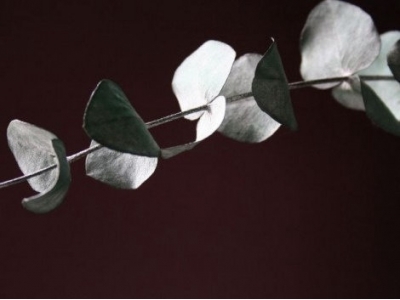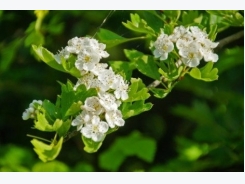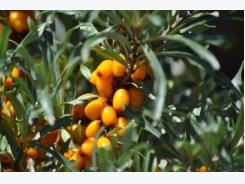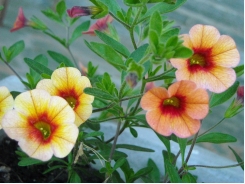How to Grow Eucalyptus Trees

Native to Australia, eucalyptus trees are known for their round, silver leaves that form on stiff branches. These branches are often used in fresh and dried floral arrangements.
The leaves of the eucalyptus tree have a strong, aromatic scent and are sometimes used in cleaning supplies and oils.
Eucalyptus trees are only hardy in USDA plant hardiness zones 8 through 11. Elsewhere, though, they can be grown as annuals planted from seed each year. Some species can reach 60 feet tall or more, while shrub varieties remain under 3 feet tall. Choose a variety suited to your yard and your needs.
Planting Eucalyptus
To plant eucalyptus from seed, store the seed in the refrigerator for up to two months to soften the seed coat. Plant the seed in coarse potting soil several weeks before the last expected frost. Eucalyptus plants don't respond well to transplanting, so use peat pots that can be planted with the seedling. Store the peat pots or seed trays on top of the refrigerator or use a heating pad to keep them warm. Mist the potting medium frequently to keep it evenly moist.
Plant seedlings outdoors after the last expected frost. Plant them in full sun, in well-drained soil. A protected location is preferable since the trees have shallow roots and can be toppled by heavy winds. Although eucalyptus can tolerate drought, it will grow better with regular moisture. Water at least weekly during dry conditions.
Eucalyptus responds well to container culture. Plant a small variety in a container that holds at least 5 gallons of potting soil. Water frequently and fertilize the container every two months with a diluted, balanced fertilizer. If you live north of zone 8, you can bring potted eucalyptus indoors to overwinter. There are two ways to overwinter eucalyptus. You can bring the plant indoors and place it in a sunny window. Be careful though if you bring indoors, eucalyptus is considered a poisonous plant.
Reduce fertilizer and water during the winter. Another method is known as shelving. To shelve an eucalyptus plant, cut it back to ground level and bring it indoors before the first frost. Store it in a cool, dry, dark basement or garage. Place it in a sunny window in spring and begin watering it again to promote new growth.
Eucalyptus trees don't need much pruning, although you can prune them back to control their growth. Prune them back to an outward facing bud or leaf.
Eucalyptus Tree Varieties to Try
Eucalyptus gunnii has interesting cream and brown bark and can grow to 80 feet tall. Young trees produce bluish-gray leaves, while older trees produce silverfish-green leaves.
Eucalyptus cinerea grows 25 to 60 feet tall in warm climates, but it is often grown as an annual shrub in colder climates, where it reaches 6 to 8 feet tall in one season. This specimen has peeling red or cinnamon-colored bark.
Eucalyptus dalrympleana grows 50 to 70 feet tall and has striking cream-colored bark. Unlike most eucalyptus trees, it produces slender, willow-like leaves. The leaves are aromatic, but they lack the rounded shape eucalyptus are known for.
Eucalyptus Tree Pests and Problems
If you live in a place where eucalyptus can grow year-round, you'll find them hardy and long-lived trees that suffer from few diseases or pest problems. In cold climates, they die off before they can experience any serious problems.
In some areas, eucalyptus trees have been known to suffer from infestations of eucalyptus gall wasp, which is a tiny grub. You may notice pinkish-brown bumps or galls on the stems near leaves. To control this pest, remove and destroy any infected leaves in the fall. Small trees can be sprayed with a pesticide, but larger trees are difficult to treat.
Tools

Phối trộn thức ăn chăn nuôi

Pha dung dịch thủy canh

Định mức cho tôm ăn

Phối trộn phân bón NPK

Xác định tỷ lệ tôm sống

Chuyển đổi đơn vị phân bón

Xác định công suất sục khí

Chuyển đổi đơn vị tôm

Tính diện tích nhà kính

Tính thể tích ao



 How to Get Rid of Invasive Bamboo
How to Get Rid of Invasive Bamboo  How to Grow Calibrachoa
How to Grow Calibrachoa